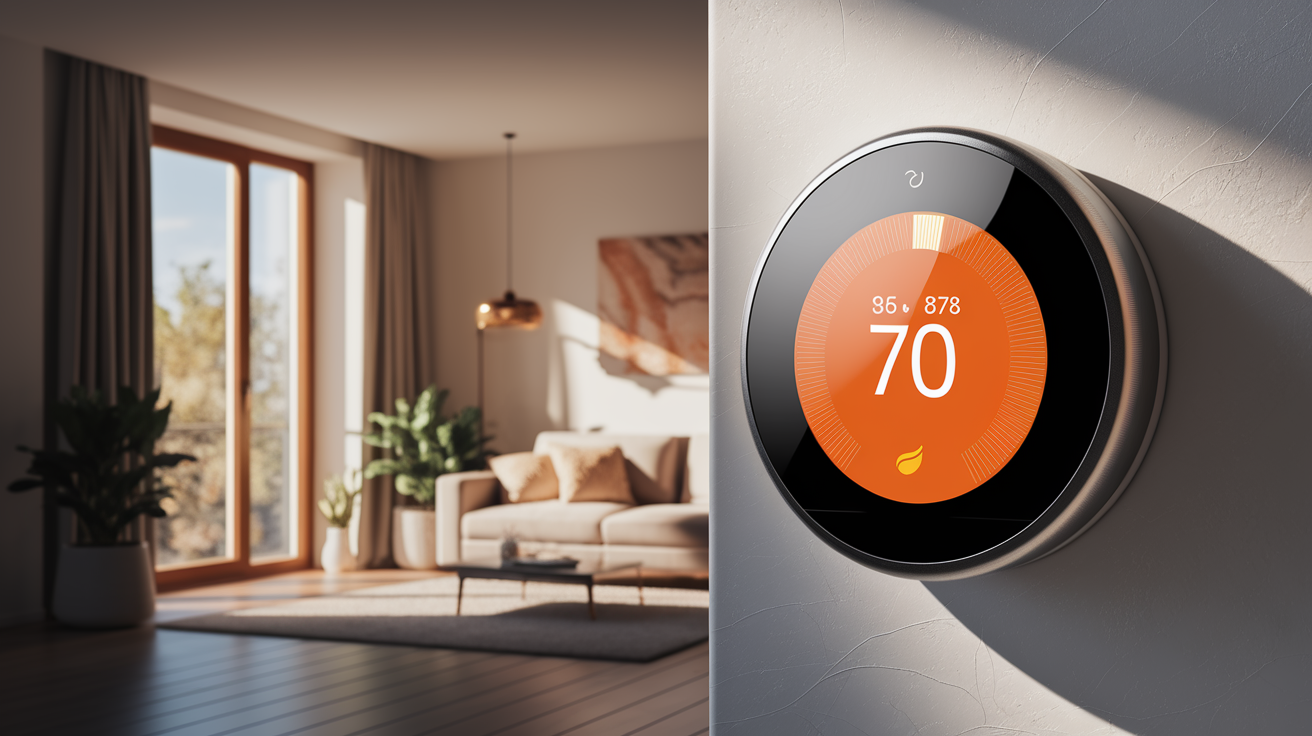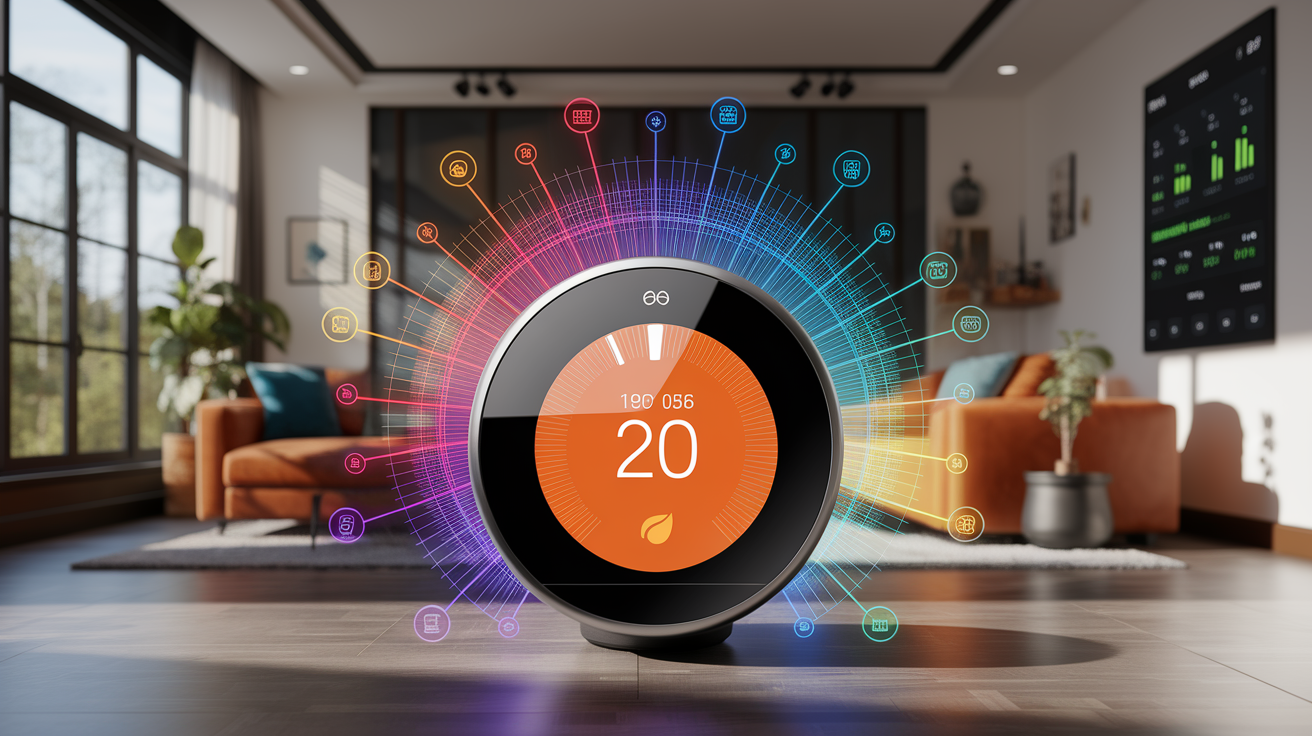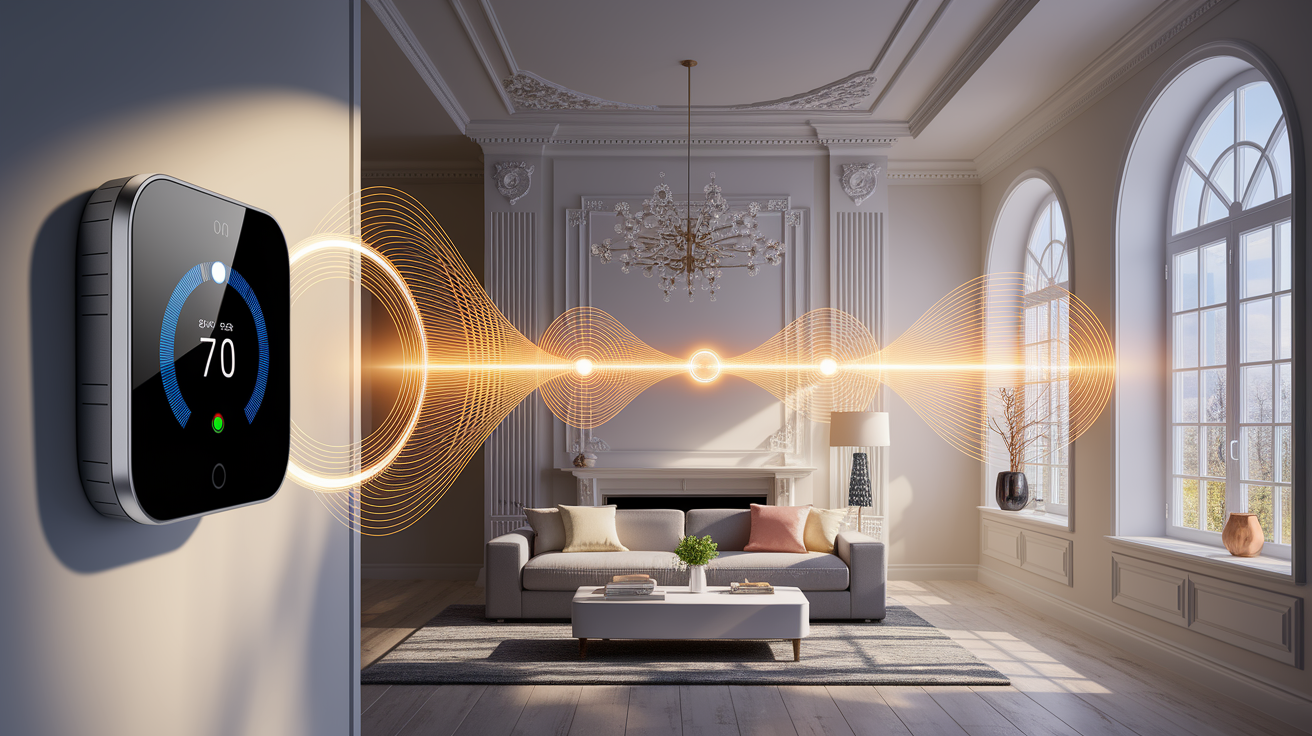Quick Answer: A thermostat is like your home’s temperature coach—constantly checking the room’s warmth or coolness and telling your heating or cooling system when to switch on or off. Whether mechanical, digital, or smart, its goal is simple: keep you comfortable while saving energy.
Your Thermostat, Uncovered
At its core, a thermostat is a device for automatic temperature control. It measures the current room temperature and compares it to your chosen “setpoint.” If there’s a difference—called a temperature differential—it signals your heating or cooling system to act. This constant feedback loop keeps the space within a comfortable range without constant manual adjustment.

Mechanical Thermostats: Bimetallic Basics
Mechanical thermostats are the classic, no-frills workhorses of temperature regulation. They often use a bimetallic strip—two metals bonded together that expand at different rates when heated. This bending action opens or closes electrical contacts, which in turn switches the furnace or air conditioner on or off.

- Thermal expansion: Metals expand when heated, contract when cooled.
- Bending strip: Different expansion rates cause the strip to curve.
- Electrical connection: The curve moves a contact, completing or breaking a circuit.
- Mercury switches: In older units, liquid mercury rolled inside a glass bulb to open or close the circuit.
This simple design is reliable but may have small temperature swings due to the mechanical nature of the switching.
Digital Thermostats: Electronic Temperature Control
Digital thermostats stepped up the game with precise electronic sensors called thermistors. These change their electrical resistance based on temperature.

- Sensor reading: A thermistor constantly measures room temperature electrically.
- Microcontroller brain: It compares the reading to your setpoint.
- Signal sending: If there’s a mismatch, it sends a low-voltage signal to your HVAC system to heat or cool.
The benefits include better accuracy, clear displays, and often programmable schedules to match your daily habits.
Smart Thermostats: Connectivity and Learning
Smart thermostats bring Wi-Fi connectivity and intelligent features into the mix. They combine the sensing ability of digital thermostats with software and cloud-based tools.

- Remote control: Adjust settings from anywhere via a smartphone app.
- Learning algorithms: Over time, they detect patterns in your heating and cooling usage to create efficient schedules automatically.
- Integration: Work seamlessly with home automation systems, voice assistants, and in some cases, renewable energy sources.
- Energy reports: Track your consumption and suggest adjustments.
If you’ve ever wondered, “How do smart thermostats learn my schedule?”—it’s by recording when and how you adjust temperature, then predicting needs based on those patterns.
Thermostat-to-HVAC Communication
Thermostats don’t heat or cool by themselves. They’re messengers in the HVAC system, controlling circuits that activate other equipment.

- Voltage supply: Most use a 24V AC signal from a transformer.
- Wiring: Separate wires for heating, cooling, fan control, and power. A wiring diagram is essential for correct installation.
- Relay switches: At the furnace, air conditioner, or heat pump, relays respond to the thermostat’s signal, powering up the necessary components.
- Heating and cooling cycles: The thermostat starts and stops these cycles, ensuring steady comfort.
Energy Efficiency: Maximizing Savings with Your Thermostat
A well-used thermostat is an energy saver’s best friend. According to energy experts, careful temperature scheduling can cut unnecessary heating or cooling time.
- Seasonal settings: Lowering the setpoint in winter or raising it in summer even by 1°C can reduce your energy bill significantly.
- Programmable schedules: Match heating or cooling to when you’re actually home.
- Smart adjustments: Smart thermostats can automatically reduce consumption when nobody is present.
- Zone control: Some systems allow different areas to be kept at different temperatures, reducing waste.
From Setpoint to Comfort – Wrapping Up
From the humble bimetallic strip to intelligent connected devices, thermostats have one purpose: to keep your indoor climate just right. By understanding how a thermostat controls temperature—measuring it, comparing it to your chosen setpoint, and instructing your HVAC system accordingly—you can use yours more effectively. Whether you prefer the simplicity of mechanical models or the smart features of modern ones, the right settings and habits will keep you comfortable while trimming energy costs.











